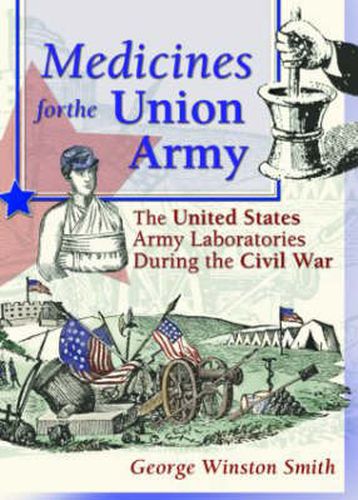Readings Newsletter
Become a Readings Member to make your shopping experience even easier.
Sign in or sign up for free!
You’re not far away from qualifying for FREE standard shipping within Australia
You’ve qualified for FREE standard shipping within Australia
The cart is loading…






It wasn’t only combat that killed during the Civil War!Among white Federalist troops alone, there were 1,213,685 cases of malaria, 139,638 cases of typhoid fever, 67,762 cases of measles, 61,202 cases of pneumonia, 73,382 cases of syphilis, and 109,202 cases of gonorrhea between May 1, 1861 and June 30, 1866. (Statistics for Negro troops covered less than three years of the Civil War period.)Preventative medicine at the time had little more to offer than quinine and a few disinfectants. There was no real understanding of the germ theory of disease. But Medicines for the Union Army: The United States Army Laboratories During the Civil War shows that in the evolution of the army’s Medical Department from incompetence to general efficiency during this time, and in the vastly improved organization and supply system designed by William A. Hammond, Jonathan Letterman, the medical purveyors, and others working under the Surgeon General, there was evidence of a great achievement.In Medicines for the Union Army you will come to understand the medical purveying system of the time and its problems, and you will witness the birth, growth, and remarkable achievements of the Federal government’s pharmaceutical laboratories at Astoria, New York, and Philadelphia, Pennsylvania.Medicines for the Union Army will inform and enlighten you about the these laboratories, including:
the funding and transportation obstacles faced at the Astoria lab
the processes by which raw materials became drugs ready for distribution
drug testing and inspection methods
the bottling of medicinal whiskey and wine at the labs
the people whose work laid the foundation for modern drug production and distribution methods
the contents of the medical supply cases (panniers) and wagons in use at the time … and much more!
Medicines for the Union Army: The United States Army Laboratories During the Civil War brings to light the groundbreaking achievements of unsung American heroes working to preserve life while the country was in bloody turmoil. No Civil War historian should be without this volume!
$9.00 standard shipping within Australia
FREE standard shipping within Australia for orders over $100.00
Express & International shipping calculated at checkout
It wasn’t only combat that killed during the Civil War!Among white Federalist troops alone, there were 1,213,685 cases of malaria, 139,638 cases of typhoid fever, 67,762 cases of measles, 61,202 cases of pneumonia, 73,382 cases of syphilis, and 109,202 cases of gonorrhea between May 1, 1861 and June 30, 1866. (Statistics for Negro troops covered less than three years of the Civil War period.)Preventative medicine at the time had little more to offer than quinine and a few disinfectants. There was no real understanding of the germ theory of disease. But Medicines for the Union Army: The United States Army Laboratories During the Civil War shows that in the evolution of the army’s Medical Department from incompetence to general efficiency during this time, and in the vastly improved organization and supply system designed by William A. Hammond, Jonathan Letterman, the medical purveyors, and others working under the Surgeon General, there was evidence of a great achievement.In Medicines for the Union Army you will come to understand the medical purveying system of the time and its problems, and you will witness the birth, growth, and remarkable achievements of the Federal government’s pharmaceutical laboratories at Astoria, New York, and Philadelphia, Pennsylvania.Medicines for the Union Army will inform and enlighten you about the these laboratories, including:
the funding and transportation obstacles faced at the Astoria lab
the processes by which raw materials became drugs ready for distribution
drug testing and inspection methods
the bottling of medicinal whiskey and wine at the labs
the people whose work laid the foundation for modern drug production and distribution methods
the contents of the medical supply cases (panniers) and wagons in use at the time … and much more!
Medicines for the Union Army: The United States Army Laboratories During the Civil War brings to light the groundbreaking achievements of unsung American heroes working to preserve life while the country was in bloody turmoil. No Civil War historian should be without this volume!